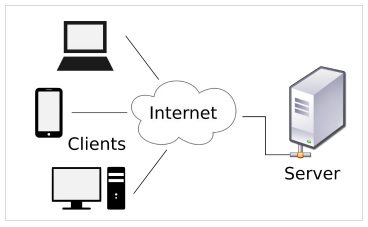
 Data Structure
Data Structure Networking
Networking RDBMS
RDBMS Operating System
Operating System Java
Java MS Excel
MS Excel iOS
iOS HTML
HTML CSS
CSS Android
Android Python
Python C Programming
C Programming C++
C++ C#
C# MongoDB
MongoDB MySQL
MySQL Javascript
Javascript PHP
PHP
- Selected Reading
- UPSC IAS Exams Notes
- Developer's Best Practices
- Questions and Answers
- Effective Resume Writing
- HR Interview Questions
- Computer Glossary
- Who is Who
What are the differences between Client OS and Server OS?
Let us understand the concepts of Client Operating System (OS) and Server OS before learning the differences between them.
Client Operating System (OS)
Client operating system is a system which works within computer desktops and other portable devices such as laptops and smartphones. Operating systems that are installed on the client’s computer device like PC, Laptop are called client OS.
This operating system helps computers to run.
Client OS manages different hardware components that are connected to printers, monitors and cameras.
It supports a single user at a time.
It is also capable of obtaining services from a server operating system.
When compared to a server operating system it helps in providing multiprocessing power for a minimum price.
The examples of client operating systems are − Windows, Mac.
Server Operating System (OS)
A server operating system is an operating system that operates on the server. Generally, we can say server OS is an advanced version of an operating system which has more features and capabilities to provide various services to other devices or client machines connected to it.
In server operating systems, most processes execute from the OS commands. It helps to install and deploy business and web applications and is also capable of managing and monitoring the connected client devices. The server operating systems execute other administrative processes.
Given below is the diagram of Server OS −

Types of Server OS
The different types of server OS are as follows −
Web server operating systems that provide web resources like web pages based on client requests.
Database server operating systems which runs Database Management Systems
File server operating systems that provide files to the connected devices.
So, server operating systems provide services to client machines.
Differences
The major differences between client OS and Server OS are as follows −
A client machine is simple and inexpensive on the other hand server OS is expensive and more powerful.
The main difference between both is the performance. There are multiple clients working on a single server. Clients send requests for network access to the server and a client is an end user.
A server operating system is an OS to run on a server, they are special OS that work on client/server architecture and serve for requests from the client side.
If a client uses a browser to search information then a server sends the source to the client to search directly.
Difference on the base of security (SAM vs DC)
SAM is a database in OS that contains the user name and password. it is a part of which can be found on a hard disk.
In SAM each end user has assigned a LAN password and window password and when a user wants to login and enter a name and password then it matches into the SAM.
If a match occurs it opens the account otherwise it gives an error. DC OS is used to secure and protect the internal cluster communication. It protects all the authorised interfaces. It protects clusters from breaches and attacks.
Storage (Centralized vs Decentralized)
Client OS and Server OS are different on the basis of storage.
Server OS is based on centralized storage.
In this server OS is centralized and a powerful machine is there which stores all data and on the other hand clients are decentralized, because clients are end users and store their personnel data on the decentralized place.
In this all the decentralized clients are connected with the centralized server, and can access all the data from the server.
Server has a big amount of storage and the client has limited storage related to the end user.
Network Model (Work-group vs Domain)
In a network model we have clients which are connected on the same network to make a work group. A project is divided into different clients. Server is also known as domain, because on a single domain many groups work and take information from the domain they can share information. Work groups take help from the domain. So, we can say that the work group is a small part of a big domain. Work groups access the domain always.

